This story originally appeared on Second Unit Director Paul Ryan’s blog. See more from his site paulgryan.substack.com, and join us on November 3, 2022 for our Heritage Event Honoring ‘A River Runs Through It‘ to meet Paul and hear his story in person…
It began at an afternoon party a while ago at Robert Redford’s Malibu Broad Beach house. The talk came around to when Bob was going to direct another film.
He hadn’t made one since Milagro Beanfield four years ago. He casually mentioned Norman Maclean’s book. A River Runs Through It. He wanted to make a film of it. In fact, he was determined to make that film, although everyone said it couldn’t be done. I knew Redford well enough to know that that would not deter him.
Back Story
I met Bob in 1968. He was at the Hahnenkamm, Downhill in Kitzbühel scouting for Downhill Racer. I was there shooting the race for my own documentary for Lange on the World Cup, Ski Racer. Some of this involved skiing the race course holding a camera for point of view shots. I was once a pretty good ski racer myself, so what seemed difficult to an observer, actually wasn’t. I just backed off to 70% of my maximum speed and concentrated on what the camera was seeing. And downhill courses have no moguls, they’re very steep, but smooth.
He saw me doing that and was impressed. He asked if I could do that for his film.
I would love to, I told him, but for better or worse, I was making my own documentary and didn’t want to give that up. Tough choice.
Our travels paralleled on the next few World Cup race scenes. We got to know each other. Still do.
The River Runs Through It project approached reality in 1990.
I really wanted to work on it, though the only fishing I had done was in my youth in suburban Boston, on the Charles River, with garden worms on hooks.
Bob was open to the idea. He knew of my work with Terry Malick on Days of Heaven, which coincidentally I shot in Montana also.
My wife Priscilla, who was working at Wildwood, brought a River script home and I spent a couple of days and nights writing out my visual ideas of how shots could be done.
There was also a copy of the script that had all the dialogue removed. Just the visual descriptions. That was a clue as to how Redford was going to approach it. Like Malick, he was counting heavily on imagery to carry the motivation of the characters.
Montana
I flew my Cessna to Montana. Again. This time the fields were more populated.
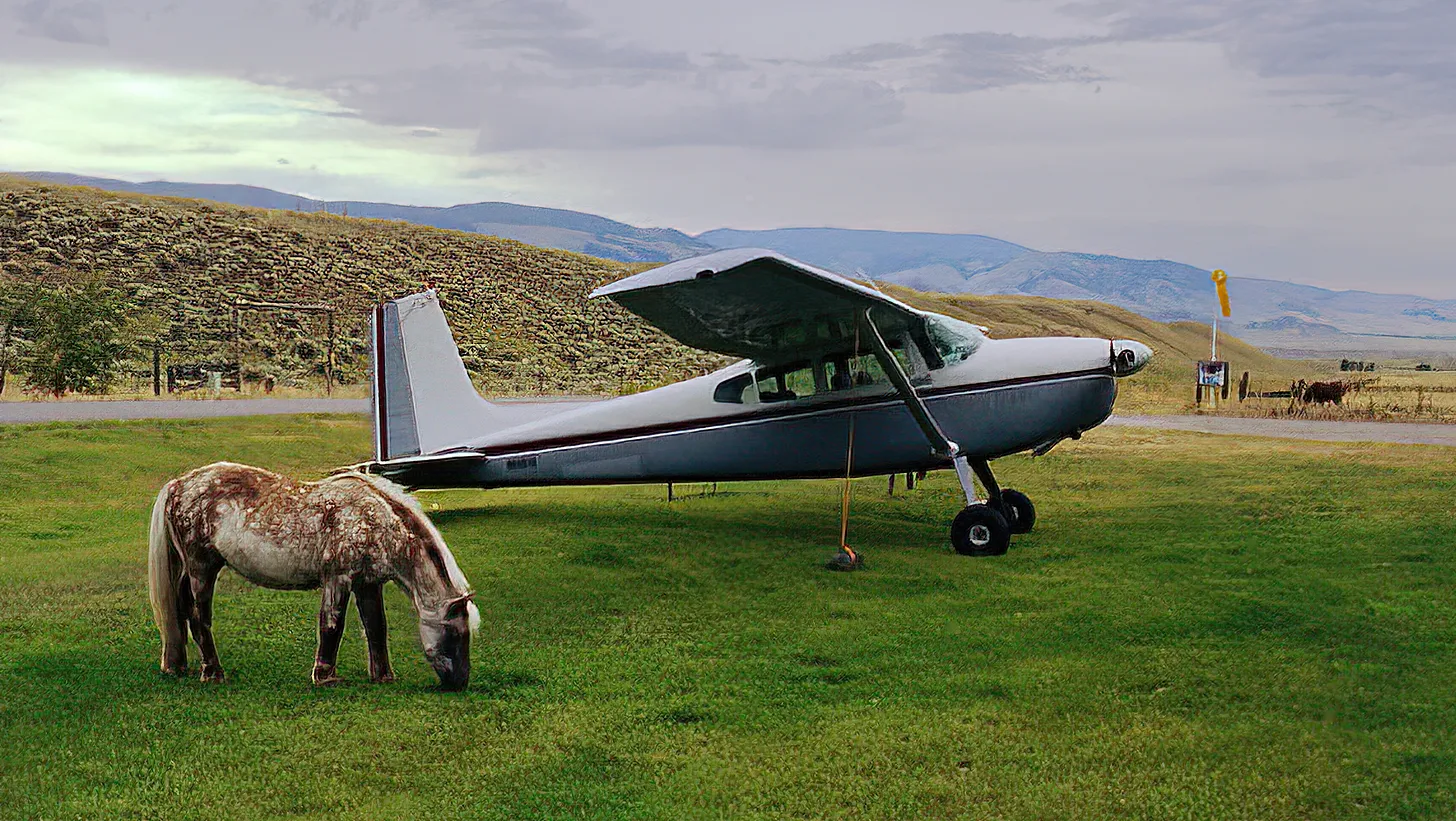
We shot around Livingston, Montana – I feel lucky that Phillip Rousselot was the first unit Cinematographer. He had worked with my film heroes, Truffaut, Goddard…
Like on Days of Heaven, it was more than the usual second unit work. On the days when they weren’t shooting first unit, I was given both the young actors, Joseph Gordon-Levitt and Vann Gravage, to create the scenes of the young boys discovering the wilds of 1920s Montana.
Bob had some images in mind that were not written in the script, and he was very articulate about that. We would often sit at the Livingston Grill dining room late into the night, “Paul, always go back to MacLean’s book,” he said, “ The images are in there, deep in the words…” and he would point out a paragraph: “.. the Montana of my youth. It was world with dew still on it, more touched by wonder and possibility than any I have since known.”
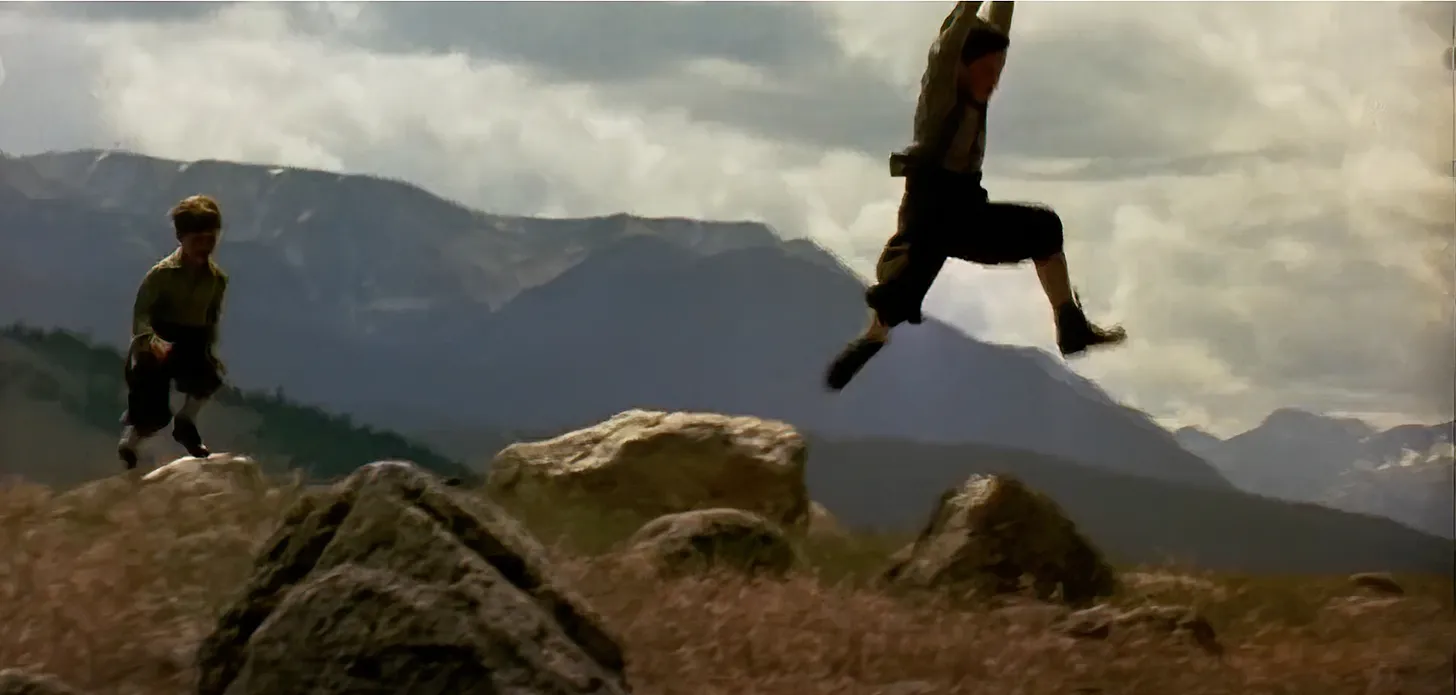
I tried to recall my own days growing up on the banks of the Charles River.
The Rowboat in The Rapids
The story called for Norman and Paul to steal a rowboat and descend a river filled with rapids, ending in a plunge over a waterfall. Phillipe had filmed Craig and Brad’s dialogue from a big raft rig on a calmer stretch of the river. It was up to me to create the dangerous aspects of the descent with stunt doubles.
Like my ski filming, I wanted a subjective view of the river running.
I called my friend Edgar Boyles who introduced me to John Wasson, a world class kayaker and rafter who lived in nearby Idaho.
He and partner Jerry Johnson arrived with a double seated kayak. My idea was to sit in the front seat, hand holding the 35mm Arriflex camera and leave it to John to guide the kayak and closely follow the picture boat through the rapids.
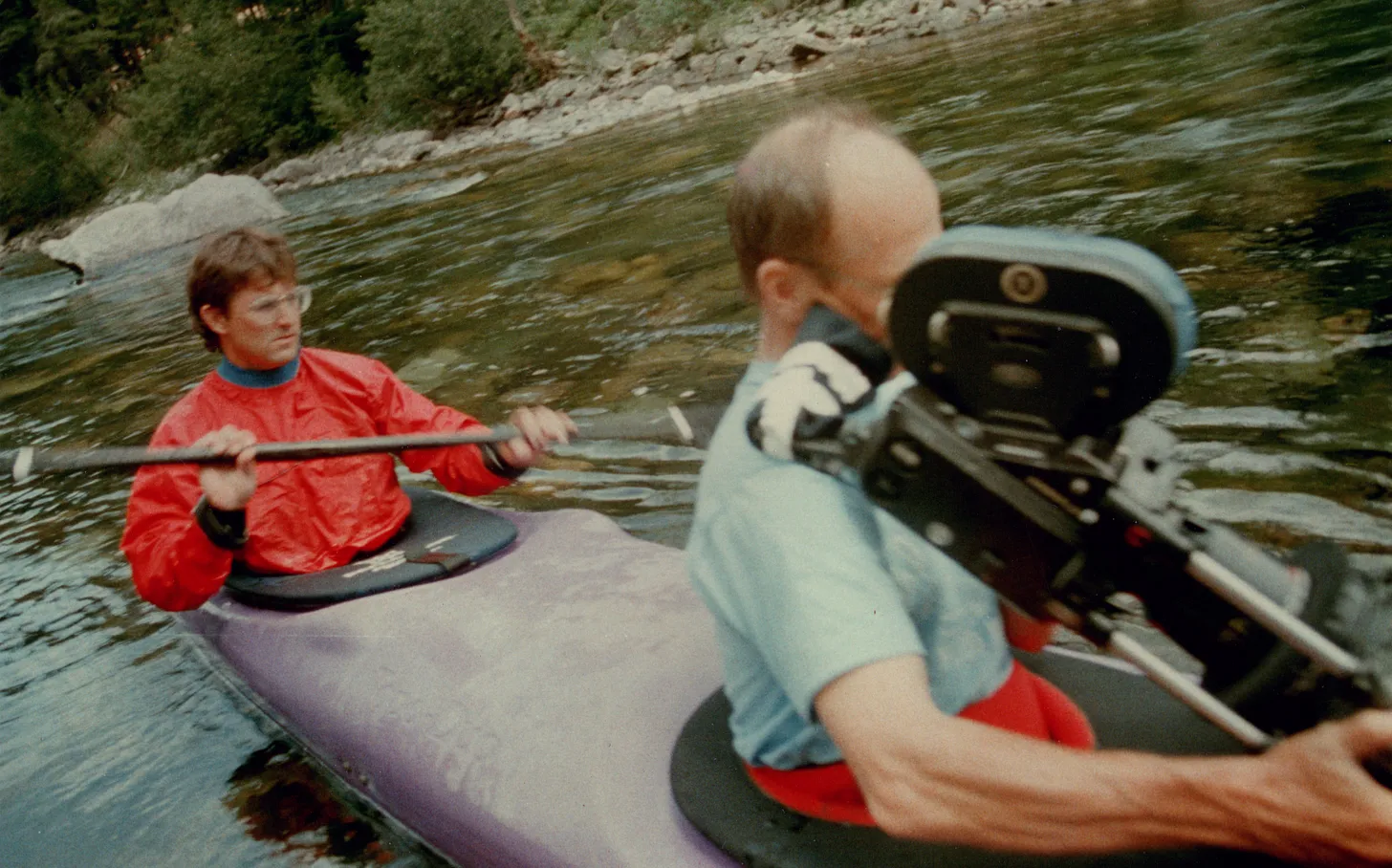
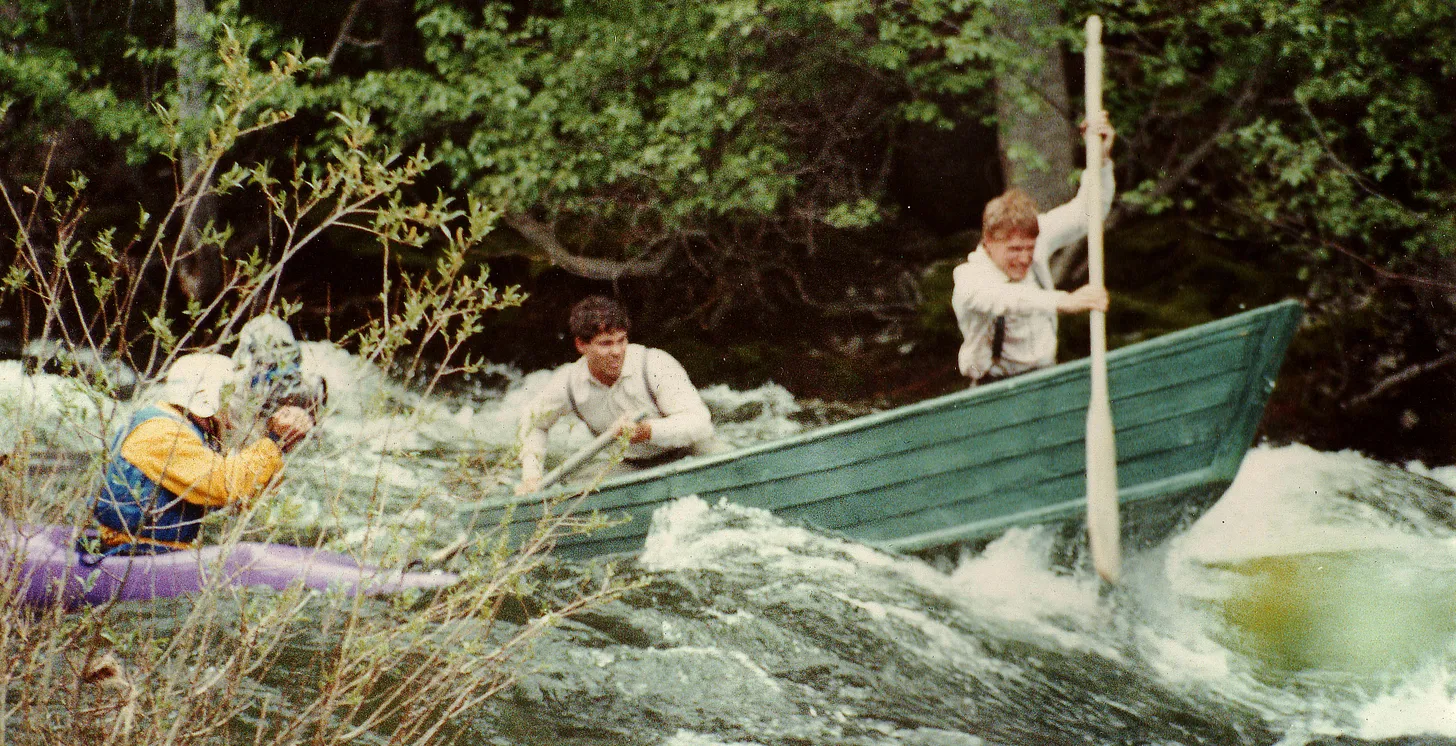
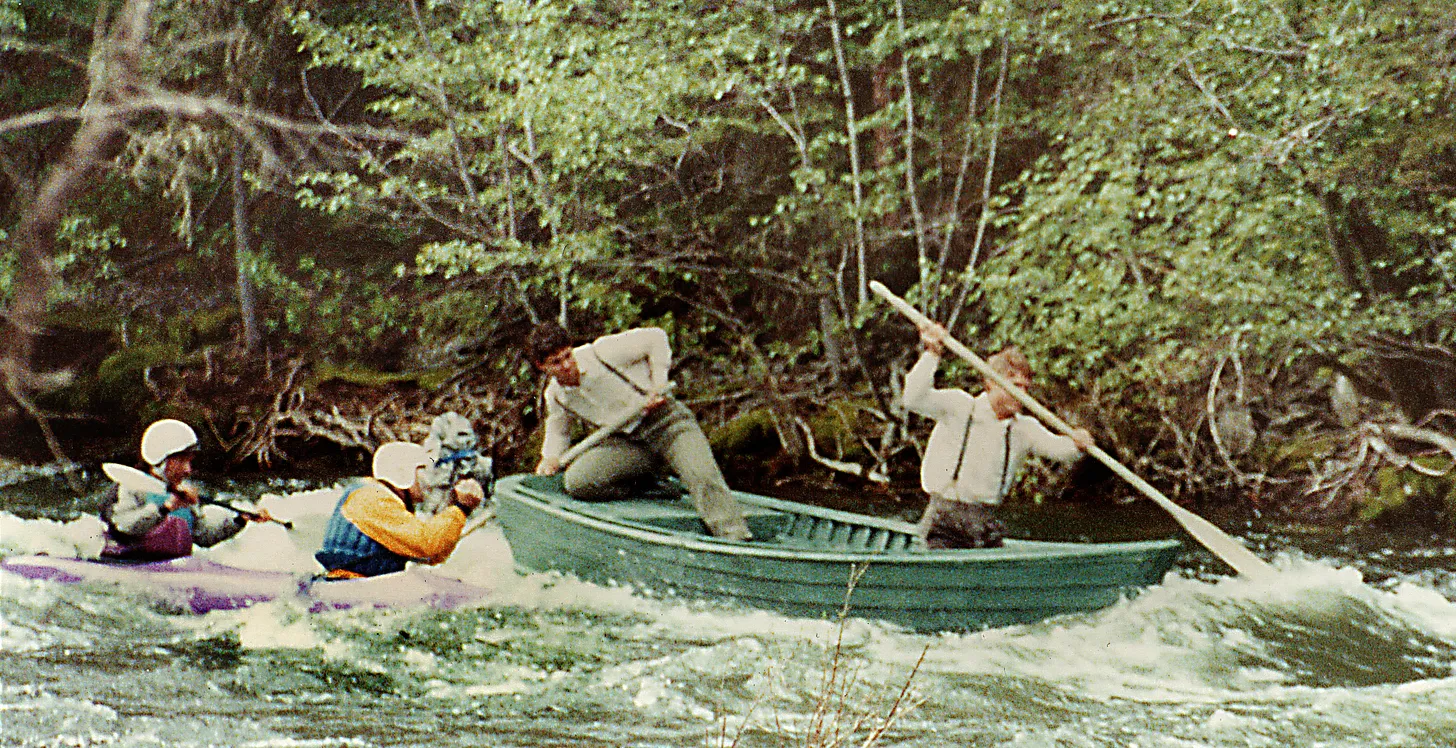
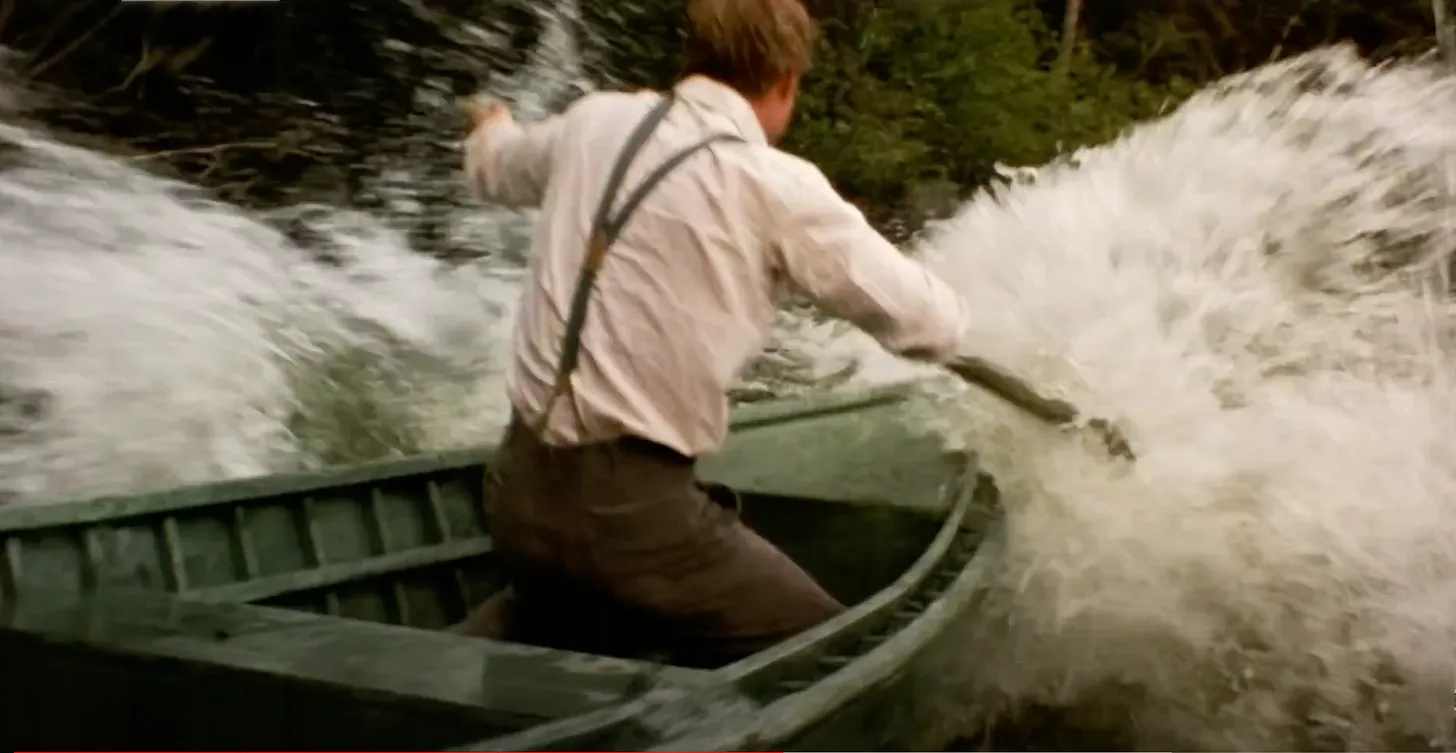
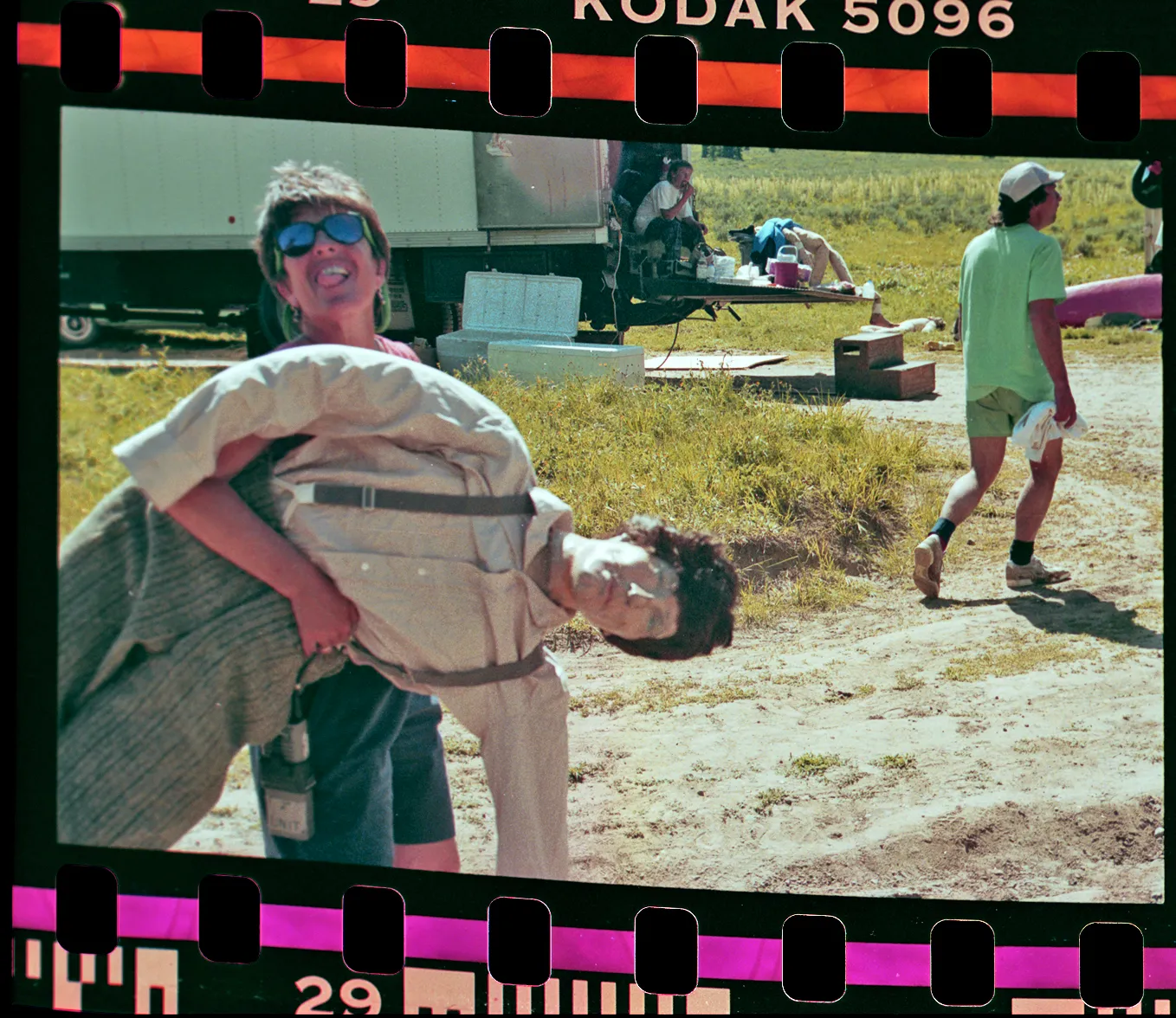
We filmed in three different rivers in three states— Montana, Wyoming, and Idaho.
I didn’t go over the waterfall, nor did our stunt doubles. We used dummies in the boat that passed for Brad and Craig for the few seconds of that shot. The boat survived. I survived.
Dry Fly Casting
“We lived at the junction of great trout rivers in western Montana, and our father was a Presbyterian minister and a fly fisherman who tied his own flies and taught others. He told us about Christ’s disciples being fishermen, and we were left to assume, as my brother and I did, that all first-class fishermen on the Sea of Galilee were fly fishermen and that John, the favorite, was a dry-fly fisherman.”
A River Runs Through It – Norman MacLean
Filming the fly casting scenes. We had the help of the best fly fishermen in the western states, Gary Borger and John Dietsch, among others.
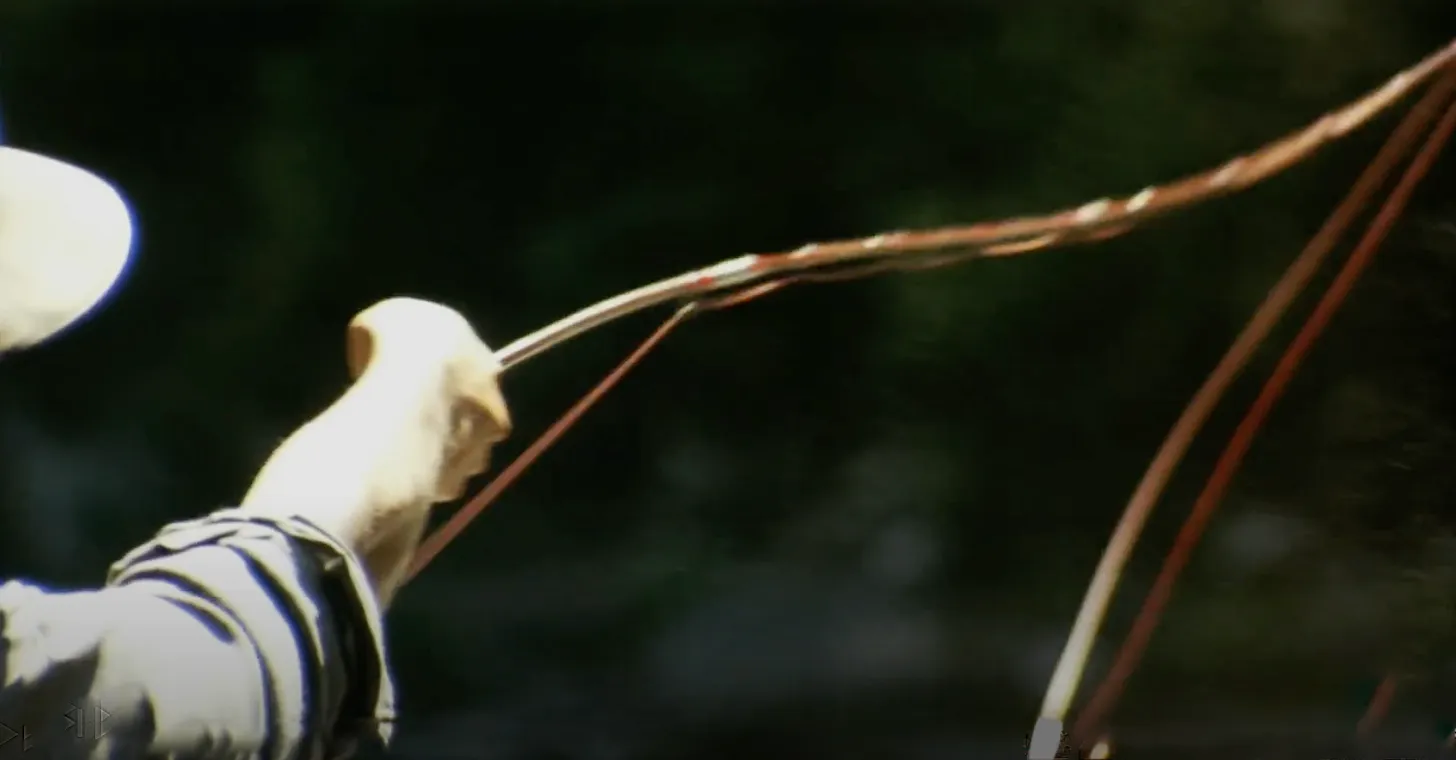
I had an amazing focus puller for these scenes, Giles Dunning, who managed to keep the line and flies sharp as they flew out to the waters.
We spent much time on the rivers, the Gallatin, The Boulder, The West Boulder. I learned the pattern of the changing light. The rise, fall, and eddies of the currents.
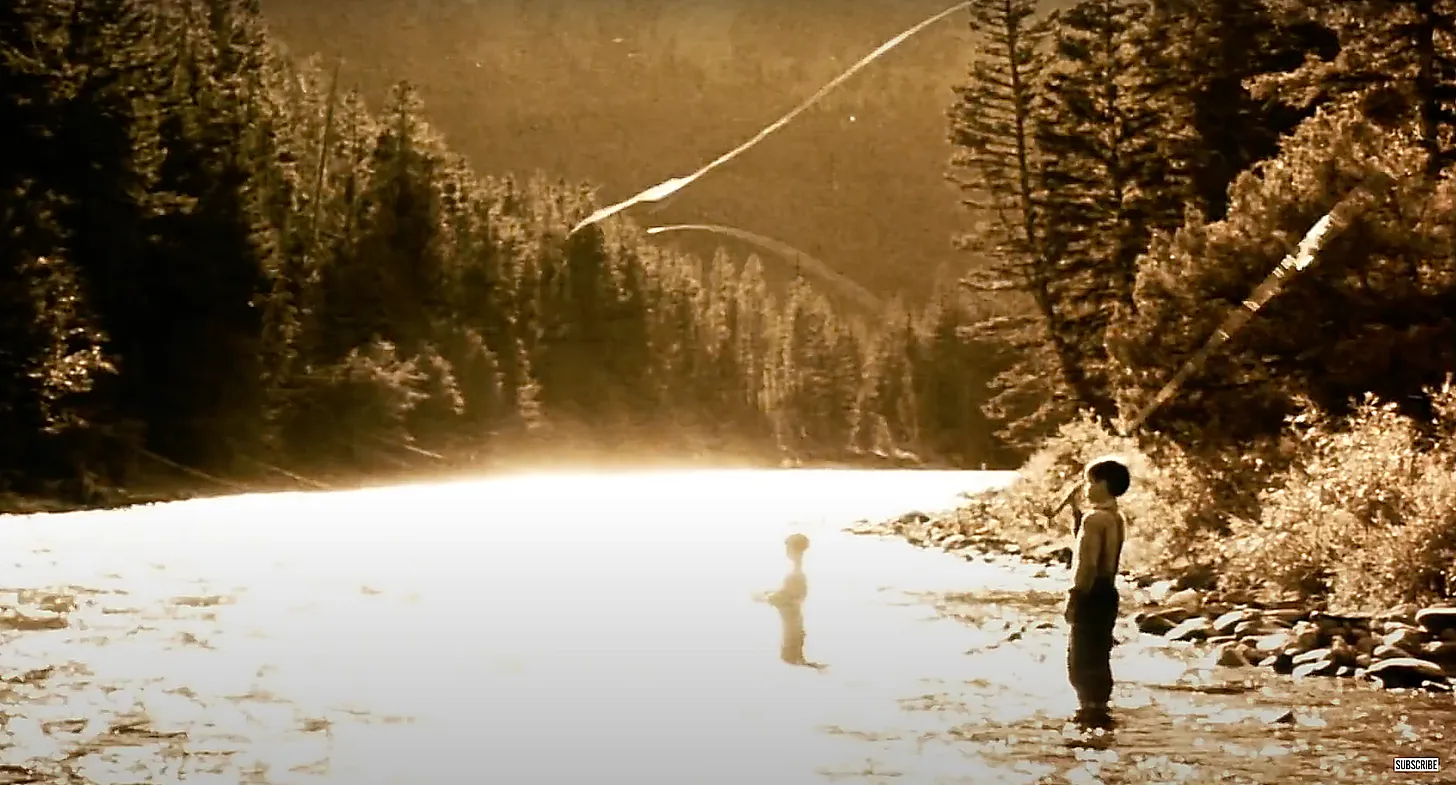
The ending of any film project is bittersweet. This time it seemed particularly so. It was a modest production, with a small crew, everything went very smoothly. The freshness of the Montana wilds, just being around rivers. No one wanted to leave. I almost bought 40 acres of land on the West Boulder.
My relationship with Robert Redford grew. In the years after, I photographed his son Jamie’s wedding at Sundance, I filmed for him on Horse Whisperer, I taught at the Sundance June Lab. The film won a Cinematography Academy Award for Phillipe Rousselot.
I learned a lot about fly fishing. It’s a “rod”, not a “pole”, dry fly fishing is superior to wet fly fishing, an individual “fly” is a “pattern”…
I still cast now and then, though I’m not so good at it. And I never caught a trout in Montana.
“…in the Arctic half-light of the canyon, all existence fades to a being with my soul and memories and the sounds of the Big Blackfoot River and a four-count rhythm and the hope that a fish will rise. Eventually, all things merge into one, and a river runs through it. The river was cut by the world’s great flood and runs over rocks from the basement of time. On some of the rocks are timeless raindrops. Under the rocks are the words, and some of the words are theirs.
I am haunted by waters.” – Norman McLean

